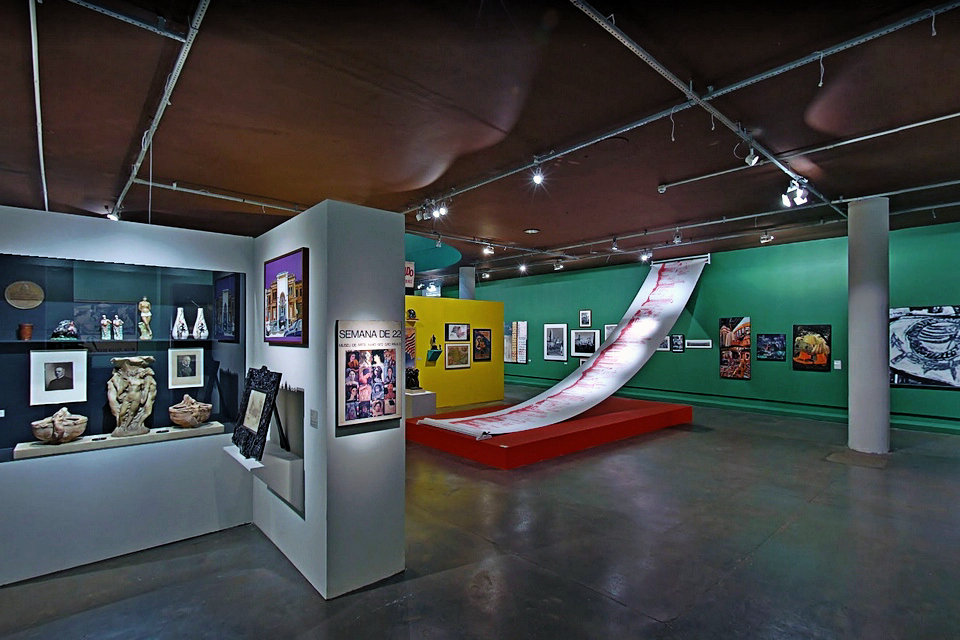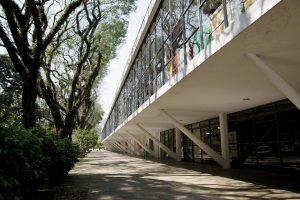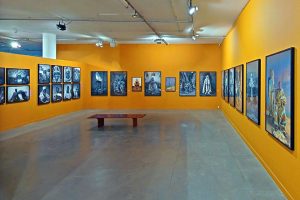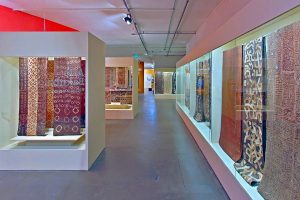On the 461th anniversary of São Paulo, the Afro Brasil Museum, an institution of the State Secretariat of Culture of SP, undertakes a search for the capital of São Paulo, a discovery of what has been done, of what has been produced, of what has been recorded, of the passage these years. The exhibition “SÃO PAULO 461 – STORIES AND MEMORIES OF A METROPOLE” guides this archeology through photographs, iconographies, sculptures, books, paintings, costumes, dresses, poems, maps , facilities and testimonials. The show also tells the history of samba in the city, with concerts by musicians Cesinha Pivetta, Osvaldinho da Cuíca and Toinho Melodia.
The exhibition conducts an archeology, using photographs, iconographies, sculptures, books, paintings, costumes, dresses, poems, maps, installations and testimonies. São Paulo went from a simple village to one of the capitals of the world. The exhibition brings together the past, present and the future. A past that was made first as a village and then with its splendor of the beautiful buildings, its beautiful public and private buildings.
“On January 25 of the Year of the Lord, 1554, we celebrated, in a very poor and very narrow house, the first mass, on the day of the conversion of the Apostle São Paulo and, for this reason, we dedicated our house to him.” Says Padre Anchieta, in a letter to superiors of the Society of Jesus, on the foundation of a small college, born of the largest city in Latin America, and one of the largest in the world.
São Paulo went from a simple village to one of the capitals of the world. For Emanoel Araujo, the exhibition brings together the past, present and the future. A past that was made first as a village and then with its splendor of the beautiful buildings, its beautiful public and private buildings. “Today this anthropophagy is even more visible in the face of its grandeur and its almost forgetfulness of those golden days of coffee, of the beautiful houses of the great avenues, of its churches, of its convents, of its stately homes that already evoked its agitated and changeable scenery of great spikes of the new architecture that was born from the wealth that sprouted from its great soil ”, he affirms.
The mosaic of the exhibition is made up of canvases by painters Massao Okinaka, Daniel Melim, Jacques Leclerc, Odetto Guersoni, Charles Pepford, Nilton Mesquita and Carolina Caliento, sculptures by Victor Brecheret, and images captured by the legendary German Lorca, Gaspar Gasparian, and other photographers anonymous. The photographs reveal historical moments of the city, such as the carnival parades on Avenida Paulista in the 1930s; flagrant icons of São Paulo culture, such as the modernist writer Mário de Andrade.
The show also features garments produced by Maria Adelaide da Silva, works with emblems of the city’s football teams, 19th century porcelain, maps, iconographies and commemorative stamps, among other objects. The exhibition is also composed of documents about the transformations promoted in São Paulo, over the years.
Another aspect addressed in the exhibition is the history of samba in the city, a response to the mistaken cliché of considering it a “grave” of the musical genre. In São Paulo, samba originated in the interior, in the shape of drumming, in coffee farms of the 19th century, which received waves of slaves from the region of the former Kingdom of Congo, Central Africa, bringing their dances in which the umbigada is the step main. Jongo, Batuque de Umbigada and Samba de Bumbo (called by Mário de Andrade de Samba Rural Paulista) solidified in the rural environment and came to the capital in the cultural baggage of black migrants who, after the abolition of slavery, headed for the capital in the hope of find better living conditions. Through the streets of the growing and vibrant São Paulo, rural drumming was shaped to the new realities of urban space.
Afro Brasil Museum
Museu Afro Brasil is a public institution, held by São Paulo State Secretariat for Culture and managed by Associação Museu Afro Brasil – Organização Social de Cultura (Museu Afro-Brasil Association – Social Organization for Culture)
It aims to be a contemporary museum where the black people can be recognized.
Over than 6,000 works highlight the importance of African people in the formation of Brazilian culture, heritage and identity as known nowadays. Also, it offers a celebration of the art and accomplishments of the Africans and Afro-Brazilians.
The Collection is considered the largest Afro – American in American with more than 6,000 masterpieces, sculptures, documents, engravings, ceramics, paintings, contemporary arts, jewelry, objects, reliefs, photographs and textiles.
Over than 70% of the collection is in the long term exhibition, portraying mainly Brazil, some countries from the African Continent, Cuba, Haiti and the United States.








